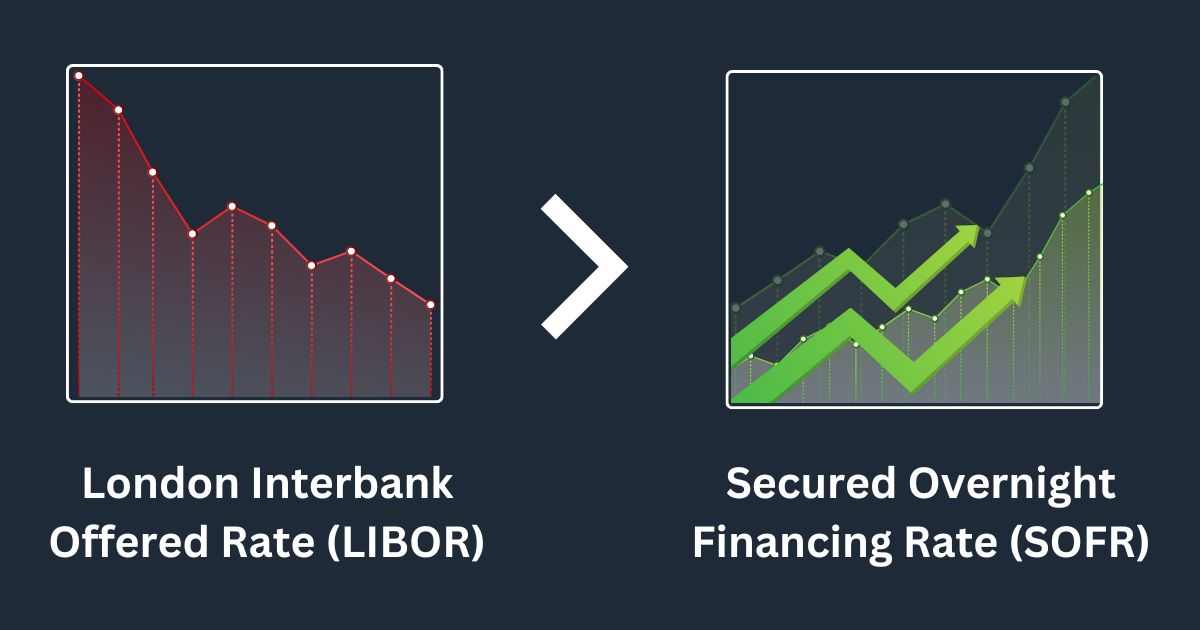Under the GST system, registered taxpayers must submit various returns regularly to report their sales, purchases, and taxes paid. These returns are known as GST returns and are filed electronically through the GST portal.
There are around 22 different types of GST returns under GST rules and out of which only 11 are there which are active, 3 are suspended, and the rest 8 are view-only in nature. Taxpayers registered under GST are required to follow the return procedure to file returns easily and take benefit of the Input Tax Credit (ITC).
While a regular taxpayer under GST is required to file two monthly returns and one annual return, special category taxpayers registered under GST, such as non-resident taxable persons, taxpayers registered under the Composition Scheme, persons allotted with Unique Identification Number (UIN), Input Service Distributors, and persons required to deduct TDS or collect TCS under GST, need to furnish separate returns.
In this article, we will cover the different types of GST returns in detail, including their purpose and filing dates. So, what are you waiting for? Let’s dive in.
What is GST Return?
A GST return is a document that contains information about the income, sales, purchases, and expenses of a business. Tax authorities use it to calculate the net tax liability of a person.
In the GST return filing procedure, the taxpayer needs to disclose various details like outward supplies (sales), inward supplies (purchases), GST on input (input tax credit), GST on output, and other particulars as may be prescribed in the document. The details are to be uploaded depending on the type of GST returns demanded by the taxpayer.
Suggested Read: GST Composition Scheme – Features, Limits, Benefits & Rules
Importance of Filing GST Returns

GST returns are a necessary part of conducting business in India. Any business that fails to file GST returns on time, it might have some serious effects ranging from heavy penalties or fines to legal actions.
- Filing GST returns is crucial as businesses that fail to file GST returns risk falling afoul of the law, which can have significant negative consequences.
- Only if businesses file their GST returns may they claim ITCs for taxes paid on expenses and purchases. Businesses might miss out on chances to collect ITCs without these returns, which could result in higher financial loss.
- Businesses can assess their tax liability and make timely tax payments by filing GST returns on time, which can help them avoid paying interest and penalty fees.
- Timely submission of GST returns is critical for maintaining a positive standing among stakeholders, suppliers, and consumers.
Types of GST Returns and their Due Date
GSTR 1

It is an important monthly or quarterly return that every registered taxpayer, composition taxpayer, and e-commerce operator must file under GST. It contains details of all outward supplies of goods and services made during a tax period. This GST return is essential as it is calculated on the net tax liability identified of the registered person.
In simple terms, GSTR 1 is a document that showcases the sales transactions of a business in a particular month or quarter. It contains information about the invoices, debit notes, credit notes, and revised invoices issued by the registered person in relation to their outward supplies.
Due Date for Filing GSTR-1
Typically, GSTR-1 must be submitted 10 days after the end of the month for which it is intended. The Commissioner may, however, extend the GSTR 1 due date for any class of individuals until the tenth of the following month.
GSTR 2A

GSTR 2A is an auto-populated GST return that contains information on all inward supplies of goods or services received by a registered taxpayer from their suppliers during a specific period. This return is generated based on the details filed by the suppliers in their GSTR 1 return.
The GSTR 2A is a read-only document, which means that recipients or buyers of goods and services can only view the details and cannot take any action in it.
However, it serves as a crucial tool for cross-checking the information uploaded by the supplier in their GSTR 1 return. If there is any missing invoice, buyers can communicate with their suppliers and redirect them to upload it in their GSTR-1 on a timely basis.
By referring to the GSTR 2A return, buyers can ensure the accuracy of their ITC claims for every financial year and across multiple tax periods. This return was commonly used for claiming ITC until August 2020, after which the buyers were required to refer to the GSTR 2B return, a static return, to claim their ITC.
Additionally, the GSTR 2A return is generated automatically following the due date of the GSTR 1 return, which makes it convenient for businesses to comply with the GST regulations.
Due Date for Filing GSTR-2A
The recipient uses GSTR-2A, a read-only document, to verify the accuracy of the information entered by the supplier in GSTR-1. If there is an inconsistency, the recipient has a choice to accept, reject, change, or hold onto the invoices.
However, only Form GSTR 2 allows the recipient to make meaningful modifications, if any. GSTR-2A must be filed between the 11th and 15th of the month.
Suggested Read: GST State Code List and GST Jurisdiction list
GSTR 2B

GSTR-2B is an important static GST return for recipients or buyers of goods and services. Unlike GSTR 2A, which is a dynamic return, GSTR 2B is a view-only document that provides constant data on ITC for a period whenever it is checked.
GSTR 2B provides important information on every invoice reported, such as whether it should be reversed, is ineligible, or subject to reverse charge. It also includes references to the table numbers in GSTR 3B, which is useful in taking action against every invoice.
The GSTR-2B is a helpful tool for buyers or recipients to accurately claim ITC and ensure compliance with GST regulations. With its detailed information and references to relevant tables, it provides a comprehensive view of the ITC available for every tax period, making it an essential resource for businesses to effectively manage their finances.
Due Date for Filing GSTR-2B
GSTR-2B is available every month from August 2020. It has access to consistent ITC data for a length of time whenever checked.
Every month, the return is made accessible on the 12th, leaving ample time for filing GSTR-3B, when the ITC is declared.
GSTR 3B

As a taxpayer registered under GST, you have a monthly obligation to file a summarised return of all your outward supplies made, input tax credit claimed, tax liability ascertained, and taxes paid. This simplified return is known as GSTR-3B.
The best part about GSTR-3B is that it is a self-declaration form that is easy to understand and does not require the compliance of comparing invoices between supplier and purchaser.
This means that both the suppliers and the recipients file the GSTR-3B form separately, reducing the likelihood of delays in the filing of returns, which would consequently attract late fees and interest.
It is important to note that GSTR-3B cannot be revised once filed. Therefore, it is crucial that you reconcile the sales and input tax credit details with GSTR 1 & GSTR 2B before filing GSTR-3B. Failure to do so may lead to discrepancies that could result in GST notices and suspension of your GST registration.
Due Date for Filing GSTR-3B
By the 20th of the month after the tax period for which GST is filed, the GSTR-3B must be submitted. The registered person must submit a NIL return for the month if there were no transactions conducted during that time.
GSTR 4

GSTR-4 is an important GST return that is filed by taxpayers who have opted for the Composition Scheme. Under this scheme, small taxpayers with a turnover of up to Rs. 1.5 crore can pay tax at a fixed rate on the annual turnover declared and filed quarterly returns instead of filing the usual three returns every month. The return was previously filed annually as GSTR-9A, but from FY 2019-20 onwards, it is filed quarterly.
This simplified return is a boon for small taxpayers as it relieves them from the cumbersome process of filing multiple returns every month.
Additionally, it allows them to focus on their business operations while ensuring timely compliance with GST regulations. The composition scheme has also been extended to service providers with an annual turnover of up to Rs. 50 lakh.
Suggested Read: Bill Discounting Vs Bill Purchase
Due Date for Filing GSTR-4
The due date for GSTR-4 is every 18th of the month after the quarter, for which such a return is required to be filed.
GSTR 5

GSTR-5 is a monthly return filed by non-resident foreign taxpayers who are registered under GST and are engaged in business transactions in India. This return is an important compliance requirement in India.
The GSTR-5 return captures various details of transactions, such as inward and outward supplies, tax liability, taxes paid, and credit/debit notes. In addition, it also includes details of any interest, penalty, or late fees that may be applicable.
Filing the GSTR-5 return is mandatory for non-resident taxable persons and failure to do so within the due date can attract interest and a late filing fee. It is essential for taxpayers to ensure that all details are correctly entered in the return to avoid any discrepancies or notices from the tax authorities.
Unlike regular taxpayers, a non-resident taxable person is not required to file any annual return. Therefore, it is important to file the monthly GSTR-5 return within the due date to ensure compliance with the GST regulations.
Due Date for Filing GSTR-5
The details in GSTR 5 must be submitted no later than the earlier of the following dates:
Within 20 days following the end of the month or within 7 days following the last day, the registration was still valid.
Suggested Read: GST Certificate Download Made Easy: Your One-Stop Guide 2023
GSTR-5A

The Online Information and Database Access or Retrieval Services (OIDAR) provider must submit the GSTR-5A, which is a summary return of the outward taxable supplies and tax payable.
Due Date for Filing GSTR-5A
Every month, the 20th of the month after the tax period for which GST is filed.
GSTR 6

GSTR-6 is filed by an Input Service Distributor (ISD). An ISD is a registered taxpayer who receives an input tax credit (ITC) for the services received by one or more of its establishments and distributes the ITC to its other establishments that are separately registered under GST. To keep track of the input credit received and distributed, an ISD needs to file GSTR-6 on a monthly basis.
The GSTR-6 return contains important information, such as the total input tax credit available for distribution, invoices on which the credit has been received, and the corresponding units or establishments that have received the credit. This information is made available to the recipients of the credit in part B of form GSTR-2A.
GSTR-6 is essential for an ISD to ensure that the credit is accurately distributed among its establishments and that there is no duplication or under-distribution of the credit. Timely filing of GSTR-6 ensures that due to non-compliance, there will be no future tax liability.
Due Date for Filing GSTR-6
This GST return must be filed on the 13th day following the month for which tax is due.
GSTR 7

Under the GST regime, certain taxpayers are required to deduct TDS (Tax Deducted at Source) while making payments to suppliers. These taxpayers are required to file a monthly return known as GSTR-7.
The GSTR-7 return contains all the details related to TDS deducted, TDS liability payable, TDS refund claimed (if any), and any interest or late fees paid or payable. The return is to be filed by the deductors who are required to deduct TDS under GST.
The details of the GSTR-7 return are important for both the deductor and the deductee. The deductor needs to file the return to comply with the GST laws and avoid any penalties. The deductee needs to verify the details of the TDS deducted and ensure that the same is reflected in their electronic cash ledger. To file GSTR-7 is easy and can be done online through the GST portal.
Due Date of Filing GSTR 7
The deductor must submit GSTR-7 within 10 days after the end of the month in which the deduction was made.
GSTR 8

If you are an e-commerce operator registered under GST and are required to collect Tax Collected at Source (TCS), then GSTR-8 is a monthly return that you need to file. This return contains details of all supplies made through your e-commerce platform, along with the amount of TCS collected on those supplies.
Furnishing GSTR-8 is mandatory for e-commerce operators who are registered under GST and who collect TCS on behalf of their suppliers.
In GSTR-8, you need to provide the details of supplies made through your e-commerce portal, including the value of supplies, and the amount of TCS collected from suppliers of goods and services. You also have the option to make any changes to the details of supplies furnished in any of the earlier period statements.
Due Date of Filing GSTR 8
The due date of GSTR-8 is the 10th day of the month after the month for which TCS is to be collected is the deadline for submitting GSTR 8 documents. As a result, the operator must deposit the tax collected by the 10th day of the month after they made the collection.
Suggested Read: What is HSN Code and full form? Updated HSN Code List 2023
GSTR 9

GSTR-9 serves as a consolidation of all the monthly summary return or quarterly returns filed during that financial year, namely GSTR-1, GSTR-2A, and GSTR-3B.
The return provides a comprehensive view of the taxpayer’s outward supplies made, inward supplies received, and the taxes payable under different tax heads such as CGST, SGST, and IGST. It also includes a summary value of supplies reported under every HSN code.
While GSTR-9 is mandatory for most taxpayers registered under GST, there are a few exceptions such as those who have opted for the composition scheme, casual taxable person, input service distributors, non resident taxpayers, and those paying TDS under section 51 of the CGST Act. However, even taxpayers with no transactions during the year are required to file a Nil Annual Return.
To file GSTR-9 accurately and on time is crucial for taxpayers to avoid penalties and stay compliant with the GST law. It is important to ensure that all the details in the return are accurate and match the data filed in the earlier returns. In case of any discrepancies, taxpayers should rectify them before filing the annual return.
Due Date for Filing GSTR-9
The due date for GSTR-9 is on or before 31st December following the end of such financial year. GSTR-9 should be filed through the common portal.
GSTR 9A

GSTR-9A is an annual return filed by composition taxpayers. This return is filed in addition to the quarterly returns filed by a composition dealer during a financial year. This return contains details of supplies made by the taxpayer during the year under the composition scheme. The details include inward and outward supplies, tax paid, input credit availed or reversed, tax refunds, and late fees, among others.
It is important for composition taxpayers to file GSTR-9A as it provides a consolidated view of the quarterly returns filed during the financial year. It also helps in ensuring compliance with the GST law and enables taxpayers to reconcile their tax liabilities.
However, it is important to note that GSTR-9A is currently suspended. Since the introduction of GSTR-4 (annual return) from FY 2019-20, GSTR-9A has been scrapped. Prior to that, GSTR-9A filing for composition taxpayers had been waived off for FY 2017-18 and FY 2018-19.
Composition taxpayers need to stay updated on the latest developments related to GSTR-9A filing requirements.
Suggested Read: Indusind bank business loan
Due Date for Filing GSTR-9A
GSTR 9A must be submitted before December 31, after the end of the fiscal year for which it is required.
GSTR-9C

GSTR-9C is an essential form that every registered person under GST must file if their annual aggregate turnover exceeds Rs. 5 crore. This form is a self-certified reconciliation statement between the books of accounts and the GSTR-9 return that taxpayers file. The purpose of 9C is to ensure that there is no mismatch between the financial records and the GST returns filed by the taxpayer.
A Chartered Accountant (CA) files the reconciliation statement in 9C. The CA audits the taxpayer’s financial statements and issues a reconciliation statement, which compares the value of supply declared in the annual GST return to the audited annual accounts.
If the taxpayer’s annual aggregate turnover exceeds Rs. 2 crores, then they must get their accounts audited by a CA or a Cost Accountant and submit the annual return along with the audited accounts and reconciliation statement in Form GSTR-9C. It is important to note that GSTR-9C must be filed for each GSTIN, and one PAN can have multiple GSTR-9C forms filed.
The GSTR-9C contains information such as the GSTIN, the name of the taxpayer, the financial year for which the return is being filed, the turnover, and the details of the reconciliation statement.
GSTR-9C is a crucial step for ensuring compliance with the GST law and avoiding any discrepancies between the financial records and the GST returns filed. Therefore, taxpayers must ensure that they file GSTR-9C on time and with accurate information to avoid any penalties or legal consequences.
Due Date for Filing GSTR-9C
The deadline for 9C is the same as for GSTR-9 annual returns. 9c must be filed before 31st December, relevant FY under audit.
GSTR 10

GSTR-10 is a final return that a registered person under GST must file within three months of the cancellation or surrender of their GST registration. A taxpayer file gst returns or in this case, GSTR-10 to make sure he clears any outstanding tax liabilities that may exist on the date of cancellation.
The GSTR-10 return is specifically designed for taxable persons whose GST registration has been cancelled or surrendered, and it must be filed electronically through the common GST portal. This final return is not applicable to Input Service Distributors, persons who pay taxes under the composition scheme, non-resident taxpayers, or persons collecting TDS or TCS.
When a person files their GSTR-10 return, they must provide details of any outstanding liabilities that they owe to the government. These liabilities may include any amount that is higher of input tax related to the stock of finished and semi-finished goods, capital goods, or plant and machinery or output tax payable on such goods.
It is crucial to file the GSTR-10 return within the stipulated three months after cancellation or surrender of registration, failing which the taxpayer may have to pay a late fee of up to Rs. 200 per day, subject to a maximum of 0.25% of their aggregate turnover.
Due Date for Filing GSTR-10
The registrant whose GST registration has been terminated must submit their final return using Form GSTR-10 within 3 months following the cancellation date or the date of the cancellation order.
Suggested Read: MSME Advantages and Disadvantages | Updated List [2023]
GSTR 11

The GSTR-11 return is specifically designed for UIN holders, and it helps to streamline the refund process for diplomatic missions and embassies. The return is straightforward and easy to file electronically through the GST portal. Simply provide the necessary information, including the UIN, and the details of the inward supplies received, and you will be able to claim the refund owed to you.
You should know that the UIN holder isn’t liable to pay taxes under the GST regime, but he can claim a refund of GST paid on inward supplies.
The GSTR-11 return is, therefore a crucial step in ensuring that UIN holders are able to claim the refund that they are entitled to.
Due Date for Filing GSTR-11
The due date for GSTR-11 is the 28th of the month following the month in which inward supplies are received by UIN holders. The GSTR-11 is, therefore not submitted on a monthly basis. As and when the supplies are made, this form is instead filed on a case-by-case basis.
Final Words
There are several types of GST returns that businesses must file to comply with GST regulations in India. Understanding the different types of GST returns and their requirements is essential for businesses to avoid penalties and ensure compliance with GST laws. With this article, we tried to present a holistic view of different types of GST returns to be filed by businesses along with due dates. We hope now you are better equipped to avoid penalties and take your business to new heights.
You may also like:
- What is SSI? Small-Scale Industries Explained
- 70+ Best RBI Approved Loan Apps In India [2023]
- Fake loan app list: 500+ apps you should avoid at any cost
- 15+ Most Profitable Best Wholesale Business Ideas in India
- SBI business loan
- hdfc bank business loan
FAQs
What is a GST return?
GST return is a document that encapsulates your sales, purchases, tax received on sales (output tax), and tax paid on purchases (input tax). You must pay the resulting tax liability (amount you owe the government) after you file GST returns.
What are the 5 levels of GST?
For a regular taxpayer, currently there are 5 levels of taxation, 0%, 5%, 12%, 18%, and 28% respectively.
What are different types of GST returns?
There are different types of GST returns that Indian businessmen comply with. Here are important types of GST returns:
- GSTR-1
- GSTR-2A
- GSTR-2B
- GSTR-3B
- GSTR-4
- GSTR-5
- GSTR-6
- GSTR-7
- GSTR-8
- GSTR-9
- GSTR-9A
- GSTR-9C
- GSTR-10
- GSTR-11
If you are an Indian businessman, you need to make sure you understand different types of GST returns in order to file GST returns timely and avoid any penalties.
Who should file GSTR-3B?
Anyone who is registered under GST should file GSTR-3B.
What is ITC in GST?
The Goods and Services Tax (GST) paid by a taxable person on any services purchased or goods purchased that are used or will be utilised for business is referred to as the “Input Tax Credit” or “ITC.”
What is a GST invoice?
A GST invoice is a statement or receipt for goods or services delivered to a customer by a merchant or service provider.
















